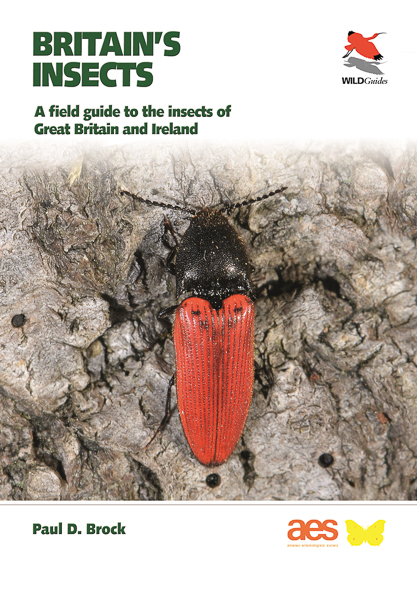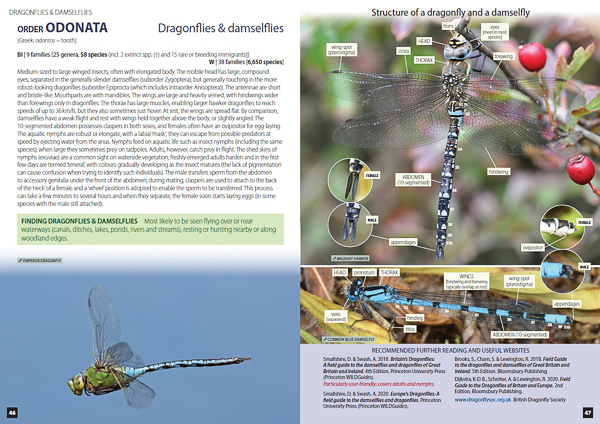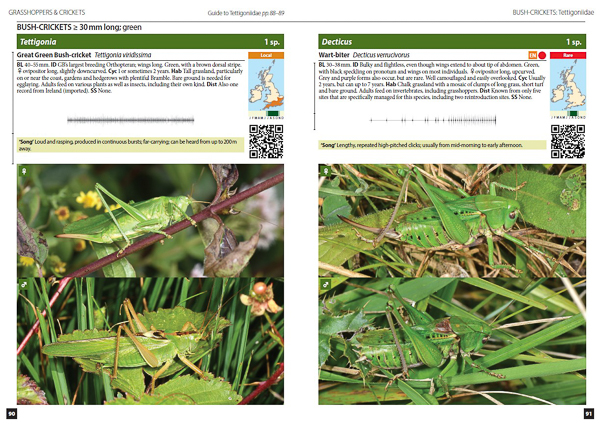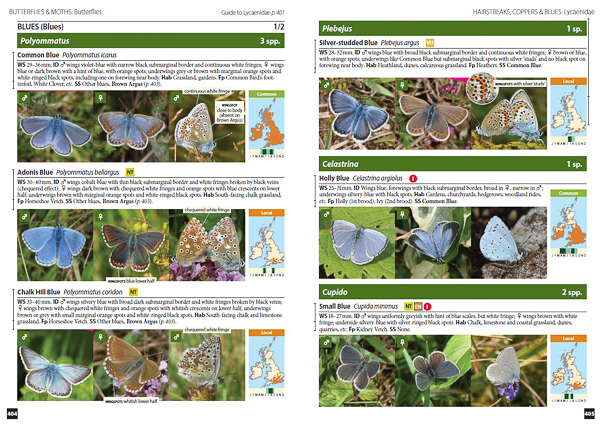 |
Britain's Insects is an innovative, up-to-date, carefully designed and beautifully illustrated field guide to Britain and Ireland's twenty-five insect orders, concentrating on popular groups and species that can be identified in the field. Featuring superb photographs of live insects, the guide covers the key aspects of identification and provides information on status, distribution, seasonality, habitat, food plants and behaviour. It also offers insight into the life history of the various insect groups, many of which are truly amazing. This is the go-to guide for entomologists, naturalists, gardeners, wildlife photographers and anyone else interested in insects, whatever their level of knowledge.
As field guides go, this is a hefty tome - not the sort of thing you would casually stuff into your backpack for an afternoon in the hills. Equally, however, if you enjoy recognising the dazzling variety of creatures around you, you probably would not want to travel very far in the British Isles without it. It is a truly outstanding addition to the general naturalist's library and really does bring the daunting task of putting a name to pretty well any adult insect within reach.
A few caveats at the outset. First, there are some 25,000 species of insect in Britain, including more than 4,000 beetles and well over 2,000 moths. In this context, putting a name to a bug often means identifying it to genus or family level, or even occasionally just recognising the order. If your hope is to determine every Dipterid you come across, you will be disappointed. Secondly, this is a guide to adult insects, and though it does include a brief guide to early stages across the orders, it will not enable you to identify that furry caterpillar crossing your path or the strange nymph in your pond. Finally, the focus is very much on identification, with minimal information on the behaviour and ecology of the insects it covers beyond what is required for determining what they are. Your journey of discovery with a new insect ends, somewhat anticlimactically, with its name. But that is what the internet is for: at least with a name, you know what to Google.
 |
Caveats aside, this is a lovely book which achieves everything that can reasonably be expected of it. The format is simple, clear and logical. After noting the various non-insect classes of arthropod which might be confused with insects, it begins with an illustrated overview of insect orders, referencing the pages where each is treated. When you go to those pages, you find further illustrated keys to the families, genera and/or species, depending on what level of identification is possible or appropriate for that group. In some cases - the butterflies, for example - every British species is included, even if it only appears here as an extremely rare migrant. In others, representative examples are chosen, either because of their intrinsic interest or because they are the most likely to be seen. Individual species are illustrated with superb photographs, while accompanying write-ups give basic identification features, notes on habitat and food, a distribution map and phenology chart, and reference to similar species. In addition - an inspired addition - the cricket and grasshopper accounts include song charts and QR codes leading to recordings of the song.
 |
My own speciality is butterflies, with a sideline in dragonflies, and I confess to being shamefully ignorant when it comes to most other groups of insects. Thus, I was easily able to play the beginner and give this book a realistic road test. For a few weeks, I made a point of photographing random insects - often ones I would not normally seek to identify - and trying to track them down from scratch using the keys and illustrations. I found I was quickly and confidently able to place all of them, from alderflies and lesser house flies, through snail-hunting beetles, shieldbugs and ants, to long-horn moths. In every case, my insect was sufficiently similar to one illustrated in the book for me to be sure I had at least the correct group, if not the exact species, and only in a few instances - notably, a mayfly and a cranefly - was my specimen manifestly a different species or genus from any shown. I particularly appreciated the photos of live insects in the book. So many features that are easily visible in the field become obscured in the classic, painted, dorsal view of many older field guides. My conclusion was unambiguous: the book works. In a great many instances, it takes you quickly to the exact species and the rest of the time it gets you close enough to enable further research on the internet. Importantly, I never found myself wondering whether it was 'this one' or 'that one'. Most of us have used dichotomous keys that leave us frustratedly wondering which path to go down right at the beginning, because it all depends on some inconspicuous feature we forgot to note. This did not happen, principally because of the wealth of illustrations.
 |
I was brought up on Michael Chinery's excellent insect books - first the Collins hardback, with lots of biology and a limited range of species, then the paperback field guide. Together, these shaped my picture of the insect world and gave me a lifelong love of these tiny creatures with such wonderful stories to tell. It genuinely grieved me as a child that so many people saw them as pests or irritants and swatted them away without compunction. I hope this new field guide will similarly inspire a further generation of young naturalists. Conservation cannot be driven by ideas alone. It needs people on the ground with knowledge and passion, who see the hidden worlds around them and fight for what they love. Books like this are how such passions begin.
 |
Britain's Insects is physically very well produced, and certainly robust enough to be taken into the field if the weight is not thought prohibitive. As well as a comprehensive index in the body of the book it has a quick index to orders (in English and Latin) on the endleaf, so you can go directly to the right place if you know what you are looking for. It also has a handy millimeter ruler in the front flyleaf, for estimating sizes. In short, the book comes highly recommended by this reviewer. If I lost my copy, I would immediately go out and buy a new one.